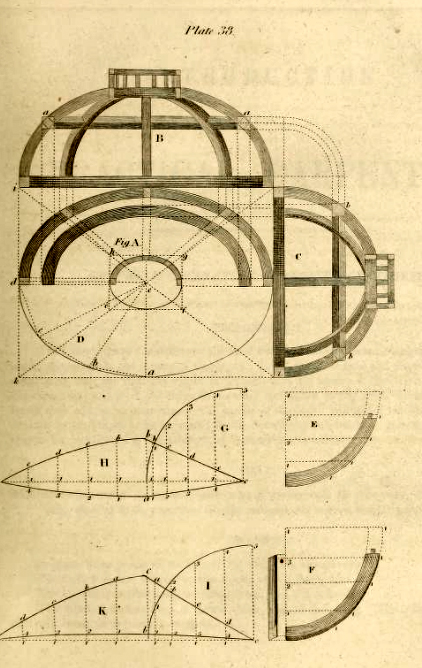
PREFACE
A New Edition of so popular an elementary work as the “CARPENTER’s Guide,” should not be offered to the public without being accompanied by a few general remarks on the original object of the Author, and the nature of the improvements which are now attempted. The first edition of the “Carpenter’s Guide” was published by its ingenious Author, Mr. Peter Nicholson, who was then a working Carpenter, and consequently a competent judge of the kind of information which practical men really required Under any circumstances practical information is highly valuable; but in Mr. Nicholson’s peculiar case, this practical information was combined with profound theoretical knowledge; thus while his daily experience made the wants of his brother mechanics familiar to him, his scientific acquire ments enabled him to supply these wants in a manner which no former Author had ever attempted. Fortunately for society, Mr. Nicholson felt his own strength; and feeling this, he determined to rescue Carpentry from the blundering hands of presuming incapacity, and to establish it upon infallible principles; –upon principles which have ever existed, and which must necessarily continue to exist, because they are founded on immutable relations. This first effort of our Author was eminently successful; it superseded on its appearance all existing works on the subject, and has for thirty-two years, through repeated editions, retained its original celebrity.
Such was “Nicholson’s Carpenter’s Guide;” let me now endeavour to shew what the present Edition is intended to be. The original work, although rigidly correct in principle, was perplexed in its arrangement, and in some cases deficient in information and examples. To amend that arrangement, and to supply these deficiencies, is the task which has been required of me by the present Publisher, and which I have cheerfully undertaken, upon condition of being permitted to record a distinct avowal, that I am indebted to Mr. Nicholson for every new principle which I have attempted to demonstrate and to apply. I was once his Pupil, and to a still longer period his Assistant; with these advantages, and the information derived from many years of uninterrupted friendship, I may, I trust, be permitted to hope, that the principles and demonstrations of my esteemed Master, will be as fully recognized in the parts which I have supplied, as in those which originally proceeded from his own pen.
To give a detailed account of the new matter introduced in this work, would take up much of that space which can be better appropriated; I shall, therefore, observe generally, that one fourth of the Plates have been introduced by me. The remaining three-fourths have been transferred from the old work, as I was unwilling to innovate where I could not improve. Principles cannot be changed like fashions: I admit that their application is susceptible of endless variety; but Mr. Nicholson’s original examples were so judiciously chosen, that I do not believe any advantage would accrue to the reader, by arbitrarily rejecting the combinations in which he first chose to embody his ideas.
Among the new Plates will be found, Sections of the elementary solids, which form the centres of domes and groins, with designs for sky-lights and for roofs. I have likewise exhibited in original drawings the formation of hand-rails in the latest stage of improvement; for although Mr. Nicholson’s first article on this subject contained the true constructive principles, he afterwards discovered that these principles were erroneously applied. If any apology be necessary for my having ventured to depart so entirely from the original article on this complex subject, it will perhaps be found in the conclusion, that I have tenaciously adhered to the principles and practice which obtained Mr. Nicholson the gold Isis medal from the Society of Arts; and that I was employed by him to demonstrate these principles for the information of that Society.
JOHN BOWEN.
Read the 1830 edition of this book here.
Note that this copy only has the first four pages of Bowen’s Memoir of Nicholson.
